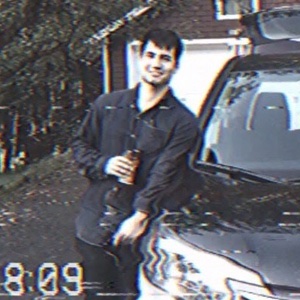1930s Horror Movies, a Key Time in Cinematic History
1930s horror movies laid the foundation for what would eventually become modern cinema.
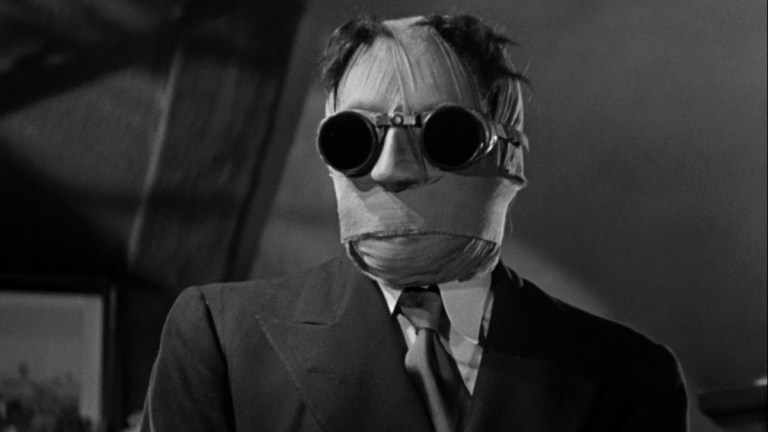
Table of Contents
Introduction
The 1930s were a tremendously influential decade for horror cinema and for paving the way for what would become modern Hollywood moviemaking.
Perhaps what is most striking about horror films from the 1930s is that virtually every movie made during this decade is still recognizable today. Almost all the major films of the 1930s are still major films today, eternally being rebooted and adapted for new generations. Even one of the decade’s more obscure films, Tod Browning’s 1932 Freaks, was an inspiration for season four of Ryan Murphy‘s American Horror Story.
The rest of the films explore archetypes so embedded in Western pop culture that they require no explanation. Horror movies from the 1930s are about characters just as alive today as they were then: Frankenstein, Dracula, Jekyll/Hyde, King Kong, and so on. Even the films here that might seem more distant from us are often adaptations of H.G. Wells, which still serve as the source material for Hollywood blockbusters in the 2020s.
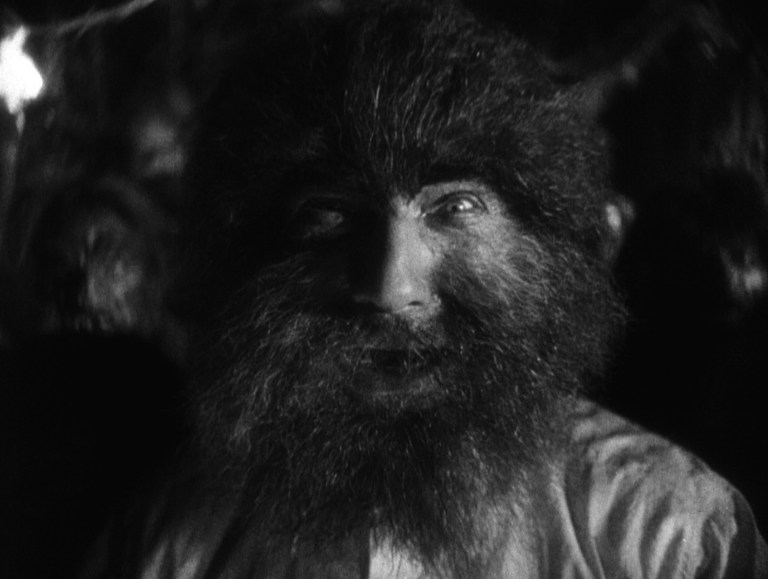
Universal Pictures also hit upon another modern phenomenon in the 30s with their “monster movies” which served as the blueprint for the interconnecting blockbuster franchises from DC Comics and Marvel today. Universal produced several films in the 30s, and beyond that, many of them played off the same story trope of a strange monster in a strange land. Frankenstein in particular was a huge hit in the decade, and Universal made three major-budget Frankenstein movies in the 30s. This is the beginning of the sequel phenomenon so prevalent throughout Hollywood history.
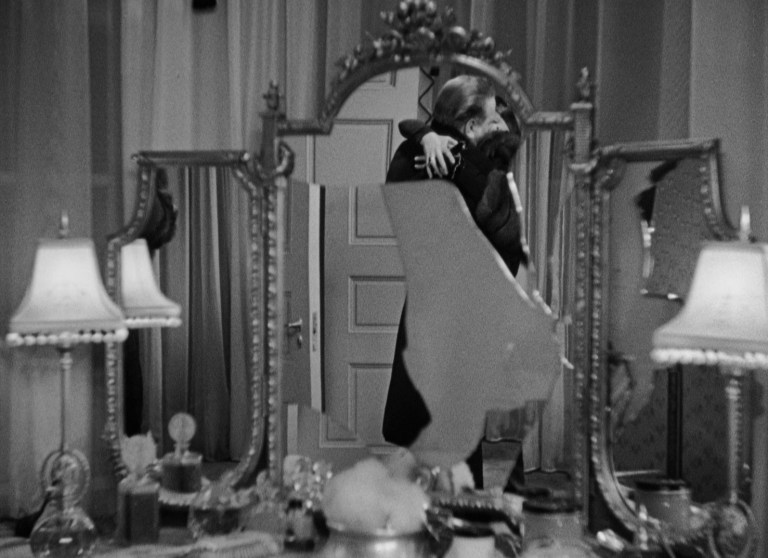
The 1930s also brought German expressionism and storytelling tropes into the American vernacular. Germany had been at the forefront of horror cinema in the 20s, and by the 30s the United States adopted much of it with great success. The dark, shadowy influences of German films such as Nosferatu (1922) and The Cabinet of Dr. Caligari (1920) can clearly be seen in early Universal horror pictures.
Even more directly, Austrian filmmaker Karl Freund, who worked as the cinematographer for German films including The Golem (1920) and Metropolis (1927), emigrated to the United States and shaped the look of arguably one of American’s most important horror films ever, Tod Browning’s Dracula (1931). Freund worked as a cinematographer on other American horror films as well, and his efforts directing The Mummy (1932) further ingrained the German style into the emerging American horror genre.
Here we’ll examine the most noteworthy and interesting horror films from the 1930s, setting them in their historical context, exploring their cinematography, and outlining the basic tenets of their plots and the personalities behind these films.
Best Horror Movies from the 1930s
Frankenstein (1931)
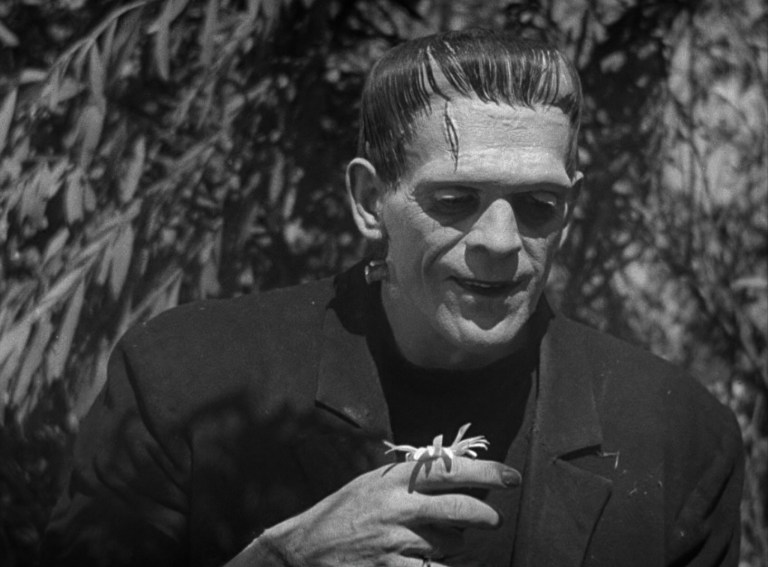
This legendary adaptation of Mary Shelley’s 1818 novel features Colin Clive as Dr. Henry Frankenstein, who is slowly driving away those around him with his maniacal fixation on creating a human being from dead body parts. He begins by experimenting with animals. Then, with the help of his assistant Fritz (Dwight Frye), Frankenstein exhumes a corpse from its coffin and steals the body. Perhaps the audacity of the entire project made it doomed from the start, but when Fritz drops the glass container containing a normal human brain and swaps it out for the brain of a criminal to implant into the human cadaver, the monster’s fate is sealed. When Dr. Frankenstein channels the electricity from a lightning storm to animate the carcass, the monster (Boris Karloff) is born. (A common mistake is to refer to the monster as “Frankenstein,” when in the film it is only referred to as “the monster.”) Originally gentle, the monster becomes frightened by fire and escapes. In an infamously morbid scene, he befriends a little girl standing at lakeside and helps her toss flowers into the water. When all the flowers are gone, he innocently tosses the girl into the water—thinking it’s part of the game—and winds up killing her. This enrages the local villagers, who seek to destroy the monster.
Dracula (1931)

Although F. W. Murnau’s silent horror classic Nosferatu (1922) is widely considered to be the first full-length feature film based on Bram Stoker’s 1897 Gothic horror novel Dracula, the 1931 version directed by Tod Browning and starring Hungarian actor Bela Lugosi in the title role is the first to actually use the title Dracula and is regarded as the standard-setter for all vampire films to follow, many of whom would also star Lugosi. The film begins in the foggy and creepy Carpathian Mountains in Transylvania, where a British real estate agent named Renfield (Dwight Frye) ignores the locals’ warnings to avoid Dracula’s castle, because it is rumored to be the lair of vampires. He switches coaches halfway along the route, only to be picked up by Count Dracula posing as a coachman. Along the way, the Count turns into a bat, which perplexes Renfield, who decides to enter the dilapidated castle anyway. He again meets Dracula, who bites him after drugging him that night, turning him into a blood-crazed vampire who is completely in the Count’s thrall. Together the pair set sail for England, where the Count vampirizes all of the ship’s crew. When they arrive in London, Renfield is placed in an asylum while Dracula begins to prey upon fair British maidens, rousing the suspicions of Dr. Van Helsing (Edward Van Sloan).
Dr. Jekyll and Mr. Hyde (1931)
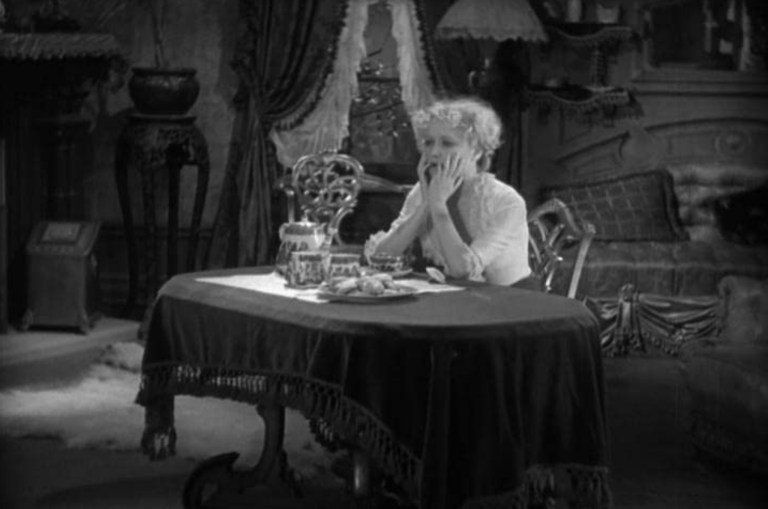
Fredric March won the Best Actor Academy Award for his portrayal of the mild-mannered and well-meaning Dr. Henry Jekyll, a scientist who postulates that there are two sides in every human—a good side and an evil side—and that it is possible via medicine to split the two sides and isolate the good side for the betterment of humanity. He develops a potion that he drinks which turns him into Mr. Hyde, a brutal and sadistic villain with an uncontrollable lust for a dancer girl named Ivy Pearson (Miriam Hopkins). Dr. Jekyll also finds that he’s becoming addicted to indulging his evil alter ego and that it may be impossible to ever return to his mild-mannered self again. The film was remade in 1941 starring Spencer Tracy in the duel title roles and Ingrid Bergman as Ivy.
The Old Dark House (1932)
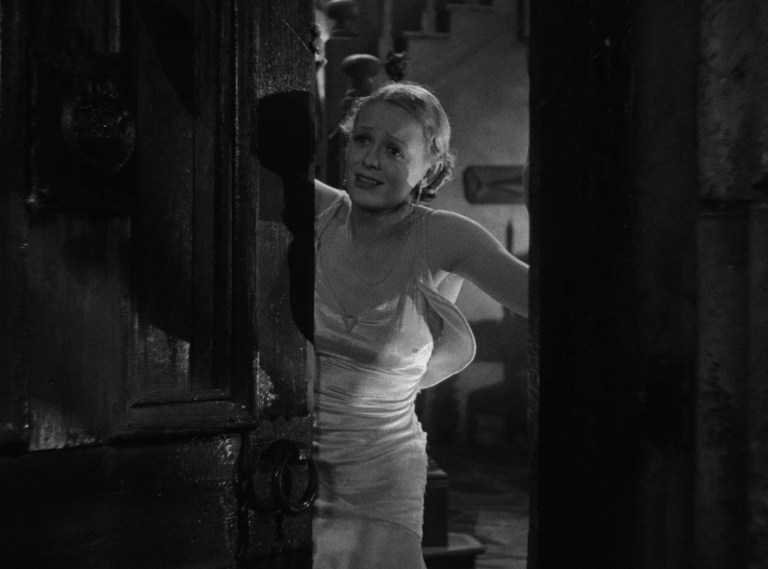
James Whale directed this gloomy, foggy thriller that takes place over the course of a single night in a cobweb-laden old mansion somewhere in the Welsh countryside. The film starts as a group of travelers are attempting to make it through a torrential storm, only for mudslides to block off the road on either side. Left with no shelter, they knock on the mansion’s door, only for a sneering, ogre-like butler named Morgan (Boris Karloff) to greet them. The mansion is owned by the eccentric and creepy Femm family—the patriarch is hysterical and elderly, his sister is a sadistic religious fanatic, and the only normal-appearing member of the family turns out to be a pyromaniac who attempts to burn down the mansion. In the morning, the storm has abated, and the five travelers bid the Femm family a speedy goodbye.
White Zombie (1932)

Based on the William Seabrook novel The Magic Island and set in Haiti, White Zombie is considered to be the first zombie movie ever made as well as the first voodoo movie ever made. Robert Frazier stars as Charles Beaumont, a young man who is deeply in love with a woman named Madeleine (Madge Bellamy), who herself is engaged to a man named John (Neil Parker). Charles seeks out the aid of a witch doctor named Murder Legendre (Bela Lugosi) for a love potion to turn her away from her fiancé. Instead, the potion turns Madge into Mr. Legendre’s zombie slave. Charles finds that he dislikes Madge’s new deadpan demeanor and pleads with Legendre to turn her back into a normal human. Instead, Legendre also turns Charles into a zombie and slave laborer on his Haitian plantation.
Vampyr (1932)
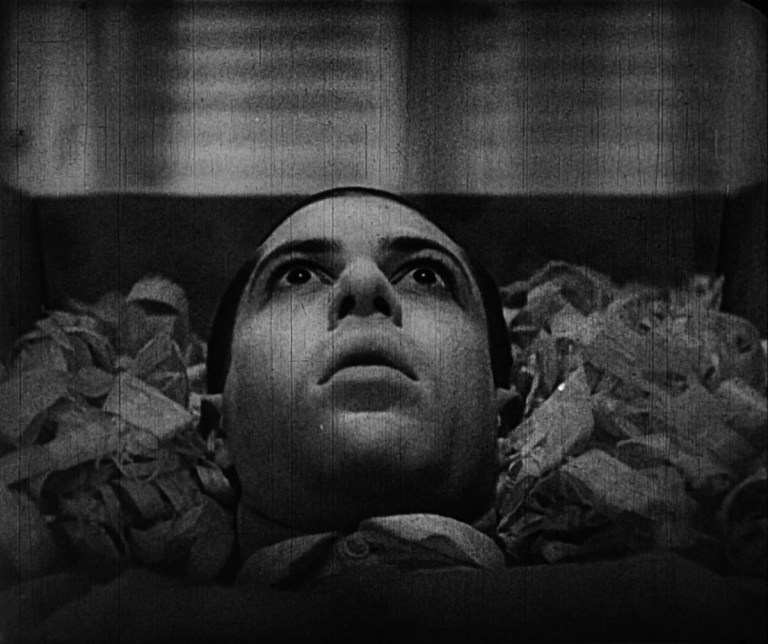
Made by Danish filmmaker Carl Theodor Dreyer, Vampyr was a groundbreaking vampire film from Europe with distribution in Germany and France in the early 1930s. The film, which features very little dialogue and primarily uses title cards so it could work in several different languages, tells the classic story of a vampire casting curses. The Criterion Collection notes it’s an innovative film because the “host of stunning camera and editing tricks and densely layered sounds create a mood of dreamlike terror.” The English version of the opening title card summarizes the plot: “This story is about the strange adventures of young Allan Gray [Julian West]. His studies of devil worship and vampire terror of earlier centuries have made him a dreamer, for whom the boundary between the real and the unreal has become him…”
Island of Lost Souls (1932)

Island of Lost Souls is a cinematic adaptation of H. G. Wells’s novel The Island of Dr. Moreau about a shipwrecked sailor who lands on a remote island with a mad scientist doing unseemly genetic experiments. Edward Parker (Richard Arlen) portrays the traveler who gets stuck on Dr. Moreau’s tiny island. Moreau is portrayed by legendary screen actor Charles Laughton in one of his first roles. He conducts experiments on human/animal hybrids, most of whom are grotesque and unstable monstrosities—with the exception of Lota, the beautifully exotic “Panther Woman” (Kathleen Burke). Moreau treats his creations with the sadistic brutality of a slave-master until his half-human/half-animal creations decide to rebel. Bela Lugosi—billed in the credits as Bela “Dracula” Lugosi—portrays the darkly philosophical “Sayer of the Law.”
Freaks (1932)
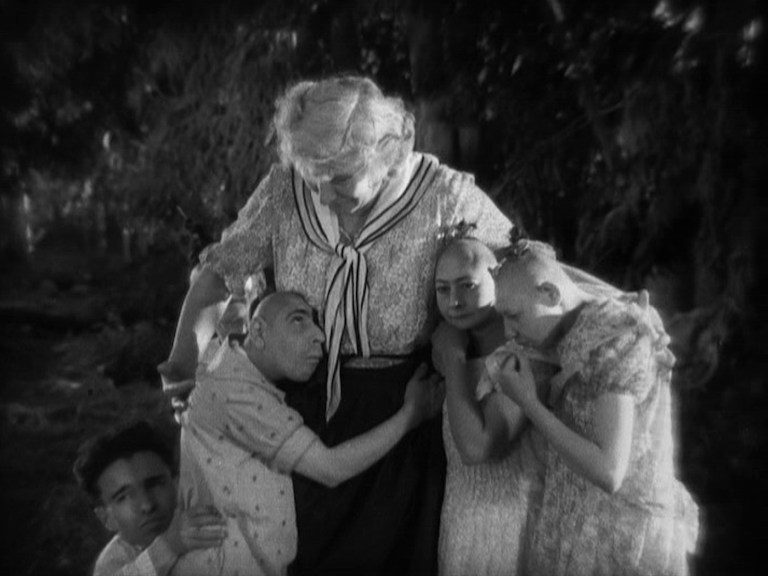
Tod Browning’s darkly surreal masterpiece is set in a circus sideshow where people with birth defects were trotted out as “freaks” for the amusement of patrons. The biological anomalies include real-life pinheads, conjoined twins, midgets, a limbless man who navigates by wriggling on the ground, a bearded lady, and a hermaphrodite. The trapeze artist of the circus is a woman named Cleopatra (Olga Baclanova), a beautiful blonde who is carrying on an affair with Hercules (Henry Victor), the resident muscle man. Hans and Frieda are two midgets played by real-life siblings Harry and Daisy Earles but who portray lovers in the film. When Frieda accidentally reveals to Cleopatra that Hans is heir to a massive inheritance, Cleopatra attempts to seduce him and convinces him that she’s really in love with him. But during a drunken outburst, Cleopatra reveals that she hates the “freaks” and is repelled by them. One stormy night, the “freaks” decide to make Cleopatra one of them in the most gruesome and disabling way possible.
The Mummy (1932)

Directed by Karl Freund, The Mummy begins in Cairo in the year 1921, during which visiting archeologists accidentally resurrect the 3,700-year-old mummy of the Egyptian prince Im-Ho-Tep (Boris Karloff) by reading words from the Scroll of Thoth out loud. Im-Ho-Tep had been mummified alive for committing the crime of sacrilege. Ten years after his resurrection, Im-Ho-Tep is passing as a human named Ardath Bay who desperately seeks to be reunited with the Princess whom he loved all those thousands of years ago. When he runs across a woman named Helen Grosvenor (Zita Johann), he realizes that she bears an uncomfortable resemblance to his long-lost love.
The Invisible Man (1933)

James Whale directed this adaptation of H.G. Wells’s 1897 science-fiction novel of the same name. Claude Rains stars as Dr. Jack Griffin, a mad scientist (is there any such thing as a sane scientist in horror films?) who is obsessed with becoming invisible. He learns of a drug called monocaine, which is derived from an herb that is native to India. In an experiment on a dog, monocaine rendered the canine invisible to the human eye, but it also drove the dog insane. Griffin finally experiments on himself—it works, but it is also slowly driving him mad. One dark winter’s night he arrives in a remote village with his face all bandaged-up and pleads with the hostess to provide him with a room. He also pleads with the inn’s workers to never disturb him. But they gradually realize that something is sorely amiss with the bandaged lodger. When a police constable and a group of men arrive, Griffin, to their horror, slowly unwraps the bandages and reveals that he is invisible. He escapes from the village and beseeches the help of a another physician, Dr. Kemp (William Harrigan), to aid him in a crime spree. He explains his experience with monocaine to Kemp: “It came to me suddenly. The drugs I took seemed to light up my brain. Suddenly I realized the power I held. The power to rule, to make the world grovel at my feet. We’ll soon put the world right now, Kemp. You and I. We’ll begin with a reign of terror, a few murders here and there….We might even wreck a train or two.” They do wind up derailing a train, killing 100 people. Griffin also robs Lloyd’s Bank in London and invisibly hands out cash to people on the street. But the law, and his encroaching insanity, will eventually catch up with him.
King Kong (1933)

In what is considered the first giant-monster movie—a genre that would blossom in the 1950s with sci-fi films based on average-sized creatures who grow uncontrollably after exposure to radiation—Carl Denham (Robert Armstrong) is an exploitation filmmaker who has gained a reputation for filming exotic animals in remote locales. He spots a down-and-out woman named Ann Darrow (Fay Wray) as she’s trying to steal an apple. Convinced she’d make a good model, he rescues her and takes her along with him in a ship to the remote Pacific atoll known as Skull Island. When they arrive, they learn that the villagers worship a 30-foot ape they call “Kong” and whom they keep trapped behind a giant wooden wall that splits the island in two. Kong takes a fancy to Ann and kidnaps her into the prehistorical jungle that lies behind the wall. Using special effects that were staggering for their time, the crew evades several dinosaurs as they venture behind the wall in their quest to rescue Ann. They finally subdue Kong by exposing him to paralyzing gas.
Denham realizes that if he brings the giant primate back to civilization, it will make him rich: “He’s always been King of his world. But we’ll teach him fear! We’re millionaires, boys! I’ll share it with all of you! Why, in a few months, his name will be up in lights on Broadway! Kong! The Eighth Wonder of the World!” Kong actually opens as a Broadway attraction, but on opening night, the flashing lightbulbs startle him, and he manages to break loose from his shackles, grab Ann, and terrorize Manhattan. In the final scene, he scales the Empire State Building with Ann in hand before fighter planes shoot him down. When someone tells Denham that Kong was killed by airplanes, he replies, “It wasn’t the airplanes. It was beauty killed the beast.”
The Black Cat (1934)
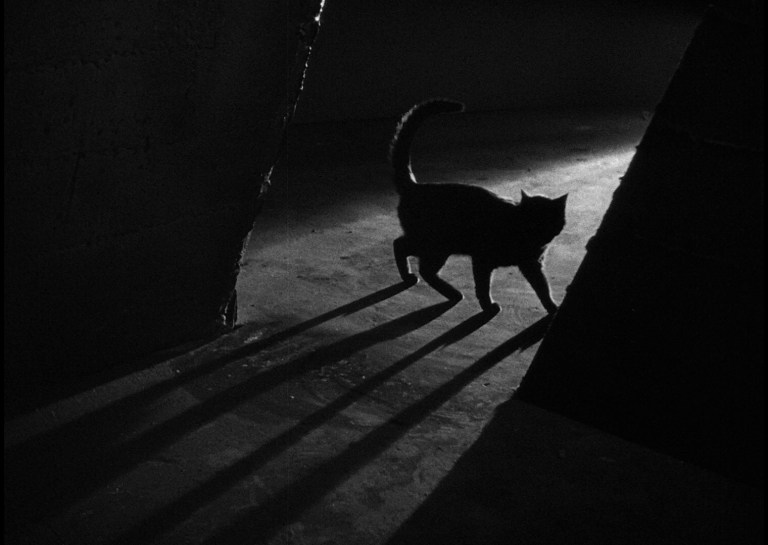
In what would be the first of their eight cinematic pairings together, horror legends Bela Lugosi and Boris Karloff (billed only as “Karloff”) star, respectively, as Dr. Vitus Verdegast and architect Hjalmar Poelzig. Verdegast is embittered after spending 15 years as a war prisoner. While on a train through Hungary, he befriends a honeymooning American couple. En route to their final destination via bus, a crash during a thunderstorm kills the driver. Their only solace is to be found in a giant futuristic mansion built by Poelzig upon the ruins of the World War I battlefield where Verdegast was first imprisoned. Poelzig is not only an architect—he is yet another mad scientist whose basement is filled with the suspended-animation bodies of human beings, one of whom was Verdegast’s wife, who died two years after the war ended. Verdegast also has a deathly fear of cats, which Poelzig uses to his advantage. The final scene involves a satanic ritual in which Verdegast finally achieves his comeuppance against the sadistic and cruel Poelzig.
Bride of Frankenstein (1935)
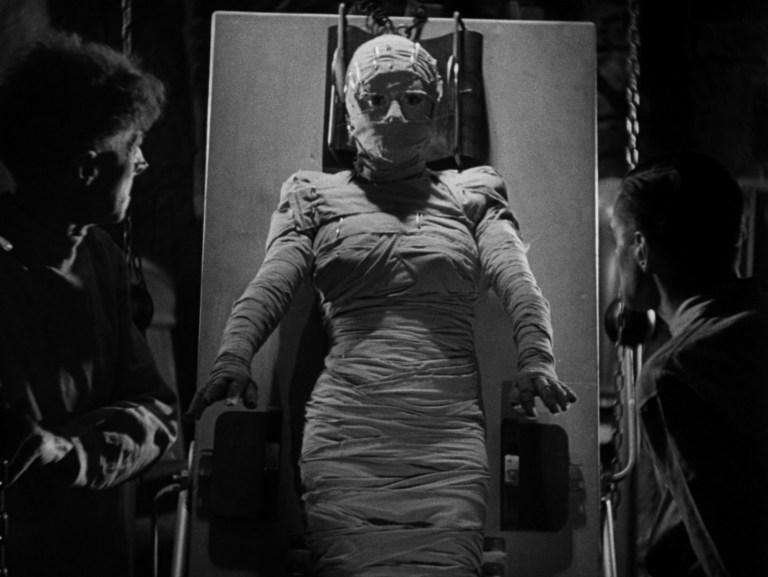
This 1930s horror classic by James Whale is a sequel to 1931’s Frankenstein. It begins with Mary Shelley (Elsa Lanchester), author of the original novel, revealing to the surprise of her husband Percy Bysshe Shelley and their friend Lord Byron that both Dr. Frankenstein and his monster survived their apparent demise.
The monster is chased by villagers when he tries to save a young girl from drowning. He escapes into the woods, where he is befriended by a violin-playing blind man. Meanwhile, Dr. Frankenstein, mesmerized by the idea that he can create monsters who can reproduce, is busy at work creating a female companion for Frankenstein, who is also played by Elsa Lanchester but with a striking, gravity-defying hairdo struck through with a grey streak that looks like a lightning bolt. But when she is first introduced to the monster, she recoils and hisses at him like a cat. Without spoiling the ending, let’s just say that Frankenstein and his would-be bride never consummate their relationship.
The Raven (1935)
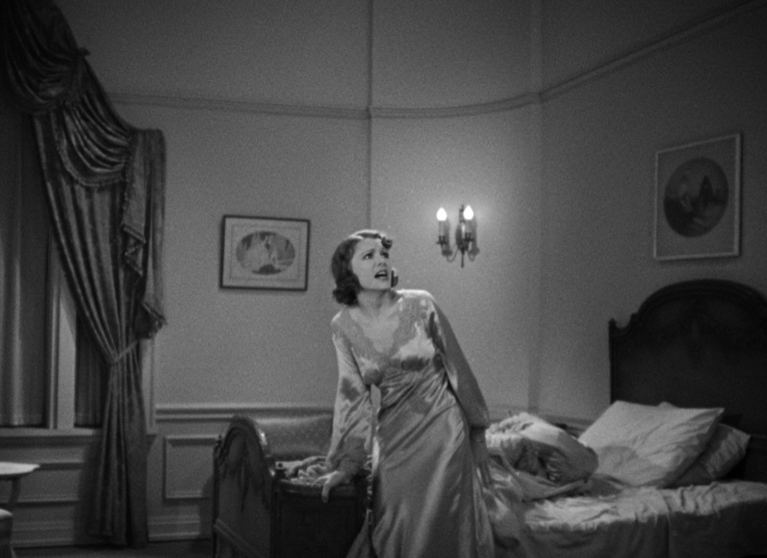
Only 61 minutes long, this film again pairs horror legend Bela Lugosi and Boris Karloff. Lugosi plays Dr. Vollin, a mentally deranged surgeon with a fetish for torture instruments and an admiration for the stories of Edgar Allan Poe. He saves the life of a woman named Jean Thatcher, a wealthy judge’s daughter who had been rendered crippled and brain-damaged after a car accident. He is able to restore her back to her original state, but he becomes romantically fixated on the idea that he can transform her into his “Lenore,” the female character in Poe’s epic poem “The Raven.” But Jean is engaged, and to thwart her upcoming marriage, Dr. Vollin plans to kidnap her and torture her in his dungeon and kill her fiancé until her father gives him ransom money. He recruits an escaped criminal named Edmond Bateman (Boris Karloff, again billed only as “KARLOFF”) to kidnap the girl. To ensure Bateman’s compliance, he performs plastic surgery that renders his face hideously deformed and vows only to reverse the surgery if he helps him complete his devilish scheme.
Werewolf of London (1935)
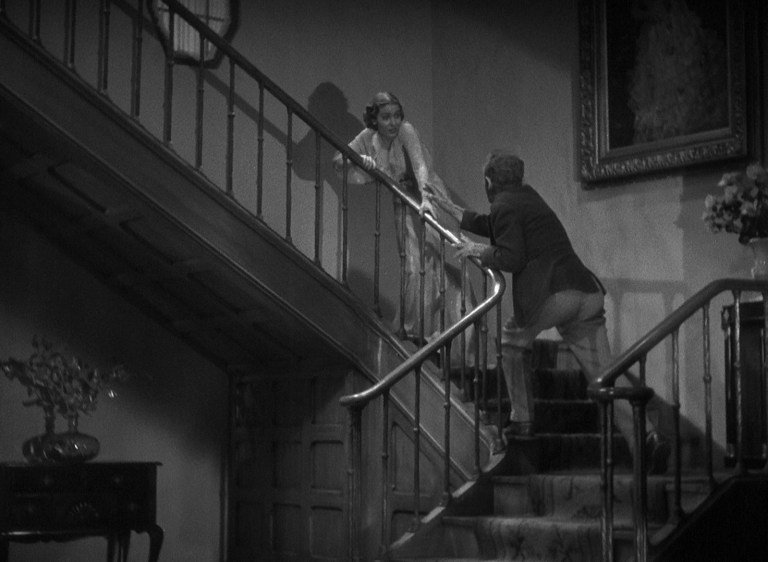
Neither the first werewolf movie (that would be 1913’s short silent film The Werewolf) nor the most famous (that would be 1941’s The Wolf Man starring Lon Chaney, Jr.), Werewolf of London is possibly the only werewolf movie that inspired a top 40 US hit song, Warren Zevon’s 1978 hit “Werewolves of London.” Henry Hull stars as a British botanist named Wilfred Glendon, who travels to Tibet in search of the elusive phosphorescent “wolf-flower” known as the Mariphasa, which allegedly only grows in an accursed place. While harvesting the flower, he is bitten by an unrecognizable creature. When he returns to London with the flower, he undergoes lycanthropy—transformation into a werewolf every full moon. A strange Japanese doctor informs him that there are currently two werewolves living in London and that the “wolf-flower” is the only antidote that will cure him of his newly acquired affliction. Apart from werewolves and the city of London, the film bears no relation to the 1981 hit horror comedy An American Werewolf in London.
Son of Frankenstein (1939)
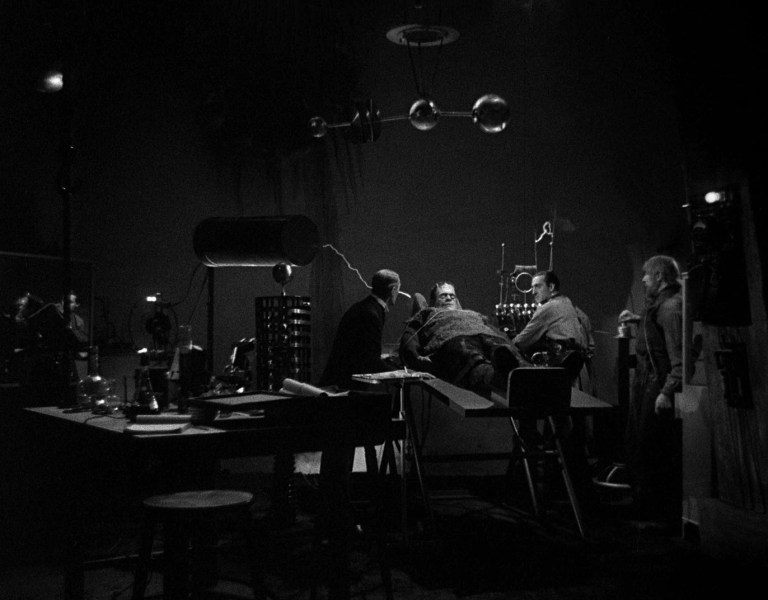
In this second sequel to James Whale’s classic 1931 Frankenstein, Basil Rathbone—more well-known for his multiple cinematic portrayals of Sherlock Holmes—portrays Baron Wolf von Frankenstein, son of Henry Frankenstein, who travels to Transylvania to claim his inheritance from his father’s estate. While in his father’s abandoned lab, he encounters a devious blacksmith name Ygor (Bela Lugosi), who pleads with him to revive the monster (Boris Karloff), who is in a coma. Although he is under the impression that his attempts failed, Wolf actually successfully reanimated the monster, who escapes and then begins murdering villagers, who are once again furious that the monster is loose. When confronted by a local investigator, Wolf comes to believe that the monster is being manipulated by Ygor, whom he shoots. This leads to a final confrontation between the monster and the son of the man who created the monster.
More Horror Movies from the 1930s
- The Kiss Before The Mirror (1933) in this film directed by horror maestro James Whale, a lawyer who’s defending his best friend for killing his wife suspects his own wife is having an affair—and that the same legal defense may work should she wind up dead.
- The Black Room (1935) Boris Karloff stars as twin brothers. One is evil, one is good. The evil one murders the good one so he can get on with his life pretending he’s the good one.
- Mark of the Vampire (1935) Tod Browning directs Bela Lugosi, who portrays “Count Mora,” who is accused of being a murderous vampire—but it may all be a setup.
- Mad Love (1935) Horror stalwart Peter Lorre portrays a deranged surgeon who replaces a pianist’s hands with those of a knife-thrower as part of a twisted plot to gain the affections of the pianist’s wife.
- Condemned to Live (1935) Ralph Morgan stars as a man who realizes he may be a vampire responsible for a series of unsolved murders after he learns that his mother was bitten by a vampire bat while she was pregnant with him.
- The Crime of Dr. Crespi (1935) in this film loosely based on the Edgar Allan Poe short story “The Premature Burial,” Eric von Stroheim portrays a crazed scientist who invents a chemical that renders people into a catatonic state that enables him to bury them alive.
- The Walking Dead (1936) Boris Karloff portrays an ex-con who is framed for murder and then executed. He earns the fascination of a scientist who believes he will be able to raise him from the dead.
- Revolt of the Zombies (1936) After World War I, Allied troops are sent to Cambodia to thwart the efforts of an evil scientist who is attempting to raise an army of the undead.
- Dracula’s Daughter (1936) Gloria Holden stars as Countess Marya Zaleska, a beautiful Hungarian woman who travels to London and leads Dr. Van Helsing to suspect she’s a vampire.
- The Devil-Doll (1936) In what was Tod Browning’s most financially successful film although he was not credited as the director, an escaped convict (Lionel Barrymore) creates an army of doll-sized humans to wreak vengeance against those who’ve wronged him.
- The Invisible Ray (1936) Karloff and Lugosi star as scientists who travel to Africa and discover a toxic element called Radium X, which allows those who are exposed to it to kill anyone simply by touching them.
- The Hound of the Baskervilles (1939) This is the first of fourteen films based on Sir Arthur Conan Doyle’s detective stories in which Basil Rathbone portrays the sleuth Sherlock Holmes and Nigel Bruce portrays his assistant Dr. Watson.
- The Cat and the Canary (1939) Mayhem erupts when the eccentric family of a deceased uncle gather ten years after his death in a mansion to hear his will being read.
- The Man They Could Not Hang (1939) Boris Karloff stars as a scientist who develops an artificial heart that killed one of his test subjects. After he is sentenced to death and presumably executed, the jurors that convicted him mysteriously begin dying.
Why Are There Almost No Horror Films From 1936 – 1938?
Observant readers might notice that from 1936 to 1938 there were no horror movies on the best-of list. Why? As scholar Alex Naylor writes, it had to do with a kind of passive censorship. For decades, film historians have repeated the half-truth that British “censorship” of horror movies—which started in the mid-1930s when authorities in England began labeling horror movies with an “H” for “Horrific”—dissuaded Hollywood from producing horror during this time because Great Britain was a huge source of film-industry income. According to Naylor:
This explanation, although currently standard among horror scholars, is erroneous; based upon a fundamental misunderstanding about the nature and operations of 1930s British censorship: the British ‘ban’ on horror films never existed.
Alex Naylor
This is absolutely true. There was no overall “ban” of horror films in Great Britain. From 1936 to 1950, only two horror films were banned by British authorities, and both of them were made in 1942. The “H” label only existed as a categorization. It did not prevent youths from viewing horror movies, and in fact it was more likely an enticement. The only movies that British children couldn’t view during this era were labeled “A” for “Adult” rather than “H” for “Horrific.”
So how did this myth arise?
In 1930, to avert possible government censorship of films that had grown increasingly bawdy and violent, a group called the Motion Picture Producers and Distributors of America (MPPDA) was founded by a conservative man named Will Hays. The MPPDA’s stated purpose was to self-police Hollywood for content that may run afoul of an increasingly conservative atmosphere that arose during the Great Depression and a societal tendency to blame economic chaos on “degeneracy” and loosened morals. A Catholic pressure group drafted a harsh Production Code that later became known as the “Hays Code” which offered guidelines that no studios were beholden to enforce.
But in 1934, the newly created Production Code Administration (PCA) was taken over by Joseph I. Breen, a devout Catholic who loathed horror films and deemed the genre to be satanically inspired. The Code, which studios began taking more seriously, warned against things such as “brutality and possible gruesomeness.” The PCA also gained the right to review Hollywood productions and demand script revisions under threat of banning films entirely.
Several films, such as 1936’s Dracula’s Daughter, underwent such severe rewrites that they bore little resemblance to the original script and very little resemblance to the classic horror films of the early 1930s. For studios, it became too expensive and time-consuming to have to slalom around the Code, so for a few years they almost gave up entirely on horror.
But this was not a result of “British censorship.” It was Joseph I. Breen, hater of horror, who spread this false rumor, one which has had remarkable staying power. It was Breen’s own penchant for censorship which directly caused a dearth of American horror in the mid-1930s.
It all came to an end in 1938, when the owner of a dilapidated Hollywood theater put together a triple bill containing Dracula, Frankenstein, and Son of Kong—although other sources say the third film was The Mummy. The triple bill was a raging success, which led to a nationwide re-release of Dracula and Frankenstein on a double bill, which in many cities brought in more money than the film’s original releases did. Hollywood producers began to ignore the Code, and Hollywood horror was back in business.
During this era, though, unaffected by American censorship, some horror movies were made abroad. Among them:
- Fährmann Maria (1936) filmed in Nazi Germany, this film tells the story of a woman who travels to a small village to fight Death itself in the quest to be reunited with her lover.
- Le Golem (1936) is a French/Czech co-production that retells the ancient Jewish fable about a clay monster that comes to life when the Jewish community is threatened.
- El Baúl Macabro (1936) is a Mexican production released in English-speaking countries as The Macabre Trunk about a scientist who struggles to keep his ailing wife alive with transfusions from the blood of young women he kills.
- Anak ng kadiliman (1937) is a Filipino horror production whose title translates as Son of Darkness. It was directed by Mar Esmerelda and stars Tito Arevalo and Tita Duran.
- The Super Madman (1937) was released in Mexico as El Superloco and is a horror-comedy loosely based on the Frankenstein legend.
- J’Accuse! (1938) is a French production set in World War I detailing the horrors of war.
- Kaibyô nazo no shamisen (1938) in this Japanese film, a woman murders a cat belonging to a female rival who’s in love with the same man that she is. The cat returns as a ghost.
Further Reading
- A Brief History of Early Horror (Educational Resource)
- Horror Film History: The 1930s (College Course Outline)
- Dark Carnival: The Secret World of Tod Browning (Book)
- 1940s Horror Movies — An Overlooked Decade (Creepy Catalog List)
- 1950s Horror Movies, Ranked/Explained (Creepy Catalog List)
